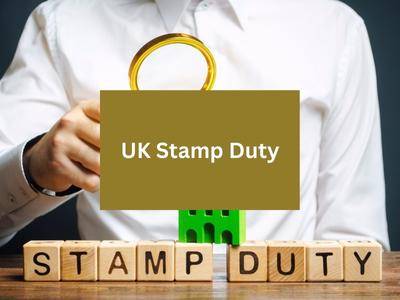What’s a Stamp Duty?
 First, a stamp duty refers to the tax you may have to pay for buying a residential property in England or Northern Ireland. The keyword here is ‘may’ – because you only have to pay said tax if it exceeds a specific price. This document tax applies to stock transfer forms transferring shares (or a share transfer form). Another critical thing to remember is that this tax differs from stamp duty land tax (SDLT), which needs to be paid on property transactions in England and Northern Ireland.
First, a stamp duty refers to the tax you may have to pay for buying a residential property in England or Northern Ireland. The keyword here is ‘may’ – because you only have to pay said tax if it exceeds a specific price. This document tax applies to stock transfer forms transferring shares (or a share transfer form). Another critical thing to remember is that this tax differs from stamp duty land tax (SDLT), which needs to be paid on property transactions in England and Northern Ireland.
Contrary to popular belief, not all property transactions need to have stamp duty. There are two conditions to documents that must have stamp duty. One, it has to be signed in the United Kingdom. It does not matter where the location of the property is. However, if it is signed in the United Kingdom, it must have stamp duty. Secondly, if the property is in the United Kingdom, or has anything that must be carried out in the United Kingdom, then it is subjected to stamp duty – even if the document is signed outside of the United Kingdom.
For those who need to pay stamp duty, do note that you must pay it to the HM Revenue & Customs (HMRC). One can make the payment electronically as well. If one fails to pay within a 30-day period from the day of signing the document, then one will be penalised with charges.
When Do I Have to Pay Stamp Duty?
You are required to pay stamp duty if the shares you acquire via a stock transfer form exceed £1000. Stamp duty is calculated at 0.5% and must be paid when shares are transferred. On the other hand, stamp duty is not payable when you acquire shares for under £1000. Plus, it is not to be paid on share gifts as well.
Not sure how much stamp duty to pay? This sometimes happens during company purchases. At times, you may receive the accounts for paid shares in times. And in those situations, it is essential that you make a reasonable estimate that the purchasing company should pay within 30 days of the transaction being completed.
Two scenarios can be played out. First, you underestimated and underpaid the charge. So, in this situation, you will not be penalised, but you will need to pay interest and additional stamp duty (if there’s any). If you overpay your stamp duty, you will be repaid with interest.
How Can I Claim Relief?
Relief from stamp duty may be available when asset transfers are done between companies of the same group. Examples of reliefs are such as intra-group relief, acquisition relief, reconstruction reliefs, sales to intermediaries, etc. Certain transfers are qualified to get a reduced rate of stamp duty. Nevertheless, you must still send the transfer documents to HRMC – even if the relief reduces the stamp duty to zero.
Claiming relief is a fairly straightforward process. To claim relief, all you have to do is send an email to the HRMC authorities with your copy of the stock transfer form or instrument of transfer. In the letter, please explain how you are entitled to claim it and attach all relevant documents. Unsure whether or not you can claim the relief?
You can reach out to the Stamp Taxes Helpline for more information.
What about Stamp Duty Reserve Tax (SDRT)?
Stamp duty and SDRT differ slightly. Stamp duty applies taxes on documents, whereas the latter is on agreements to transfer chargeable securities. In the United Kingdom, there is an electronic document share transfer system called CREST. SDRT is a separate tax that is charged at 0.5% (regardless of trade value) that you can easily settle via CREST.
Looking for corporate tax support in the United Kingdom? You can contact 3E Accounting.

